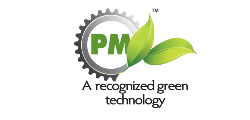Capabilities
Key Processes Offered:
Core Processes
Powder blending is the process of mixing metal powders to create a homogenous mixture used for sintering metal products. It benefits companies by ensuring a uniform composition, resulting in high-quality products with consistent mechanical properties. Accurate powder blending also reduces waste and lowers production costs, making it an essential step in the manufacturing process.
Forming is the process of shaping a compacted metal powder into a specific design using a press or other equipment. It benefits companies by allowing for the creation of complex and intricate shapes with high precision, resulting in less material waste and lower production costs. Forming also ensures uniform density and properties throughout the final product, leading to high-quality Powder Metallurgy products.
Sintering is the process of heating compacted metal powder in a furnace until the particles fuse together to form a solid metal product. It benefits companies by creating high-strength, high-precision parts with tight tolerances and excellent mechanical properties. Sintering also allows for the creation of parts with complex geometries that would be difficult or impossible to produce through traditional manufacturing methods. Overall, sintering is a cost-effective and versatile method for producing high-quality metal parts.
Sizing is the process of repressing a Powder Metallurgy part to achieve its final dimensions and tolerances. It benefits companies by ensuring that the finished product meets the desired specifications and has the required dimensional accuracy. Sizing also improves the part’s surface finish, increases its density, and enhances its mechanical properties, resulting in a high-quality Powder Metallurgy product that meets the customer’s requirements.
High temperature sintering is the process of sintering metal powders at temperatures above 2000°F, which results in a denser and stronger product. It benefits companies by creating parts with excellent mechanical properties, high corrosion resistance, and improved wear resistance. High temperature sintering also allows for the production of parts with more intricate shapes and smaller tolerances, which would not be possible with traditional manufacturing methods. Overall, high temperature sintering is a cost-effective and versatile method for producing high-quality metal parts that meet demanding performance requirements.
Secondary Processes
CNC turning is a manufacturing process that uses computer-controlled machines to remove material from a Powder Metallurgy part to create a desired shape or design. It benefits companies by allowing for the production of parts with high precision and accuracy, reducing waste and production costs. CNC turning also enables the creation of complex geometries and shapes that would be difficult or impossible to achieve with traditional machining methods. Overall, CNC turning is a cost-effective and efficient method for producing high-quality Powder Metallurgy products with tight tolerances and complex features.
Drilling and tapping is a metalworking process that involves creating a hole in a metal object and then threading it to accept a screw or bolt. This process is essential when assembling metal products and can greatly benefit companies that sinter metal products by ensuring that the products are securely fastened together. Properly drilled and tapped holes also increase the durability and reliability of the products, reducing the need for costly repairs or replacements.
Shot blasting is a process of propelling abrasive materials at a high velocity to clean, polish, or strengthen a metal surface. This process can benefit companies that sinter metal products by removing surface contaminants and impurities, improving the adhesion of coatings and paints, and creating a uniform surface texture. Shot blasting can also increase the fatigue life and corrosion resistance of the metal products, leading to higher quality and longer-lasting products.
Steam treat is a process of exposing metal products to high-pressure steam to improve their mechanical properties and resistance to wear and corrosion. This process can benefit companies that sinter metal products by increasing their strength, ductility, and hardness, while also reducing their brittleness. Steam treatment can also enhance the surface finish of the metal products and increase their resistance to environmental factors such as humidity and saltwater. Ultimately, steam treat can lead to higher quality and more durable metal products, improving their overall performance and lifespan.
PTFE banding is a process that involves wrapping a metal product with a PTFE (polytetrafluoroethylene) tape to create a non-stick surface. This process can benefit companies that sinter metal products by preventing the products from sticking to each other during the sintering process, reducing scrap rates, and minimizing the need for cleaning or reworking. PTFE banding can also improve the surface finish of the metal products and increase their resistance to wear and corrosion. Ultimately, PTFE banding can lead to higher efficiency and quality in the sintering process.
Resin impregnation is a process of filling the pores of a Powder Metallurgy product with a resin material to improve its strength, durability, and resistance to wear and corrosion. This process can benefit companies that sinter metal products by enhancing the overall quality and performance of the products, increasing their lifespan, and reducing the likelihood of failure or defects. Resin impregnation can also improve the surface finish of the metal products and make them more suitable for high-performance applications. Ultimately, resin impregnation can lead to higher customer satisfaction and increased profitability for the company.
Vacuum oil impregnation is a process that involves saturating the pores of a Powder Metallurgy product with oil under vacuum conditions to improve its strength, durability, and resistance to wear and corrosion. This process can benefit companies that sinter metal products by enhancing the overall quality and performance of the products, increasing their lifespan, and reducing the likelihood of failure or defects. Vacuum oil impregnation can also improve the surface finish of the metal products and make them more suitable for high-performance applications. Ultimately, vacuum oil impregnation can lead to higher customer satisfaction and increased profitability for the company.
Applications & Industries:
Types of Parts Produced

Take the next step
See how Metal Sintering & Powder Metallurgy processes can benefit your next project.









© 2023 Powder Metallurgy Products

© 2023 Powder Metallurgy Products








